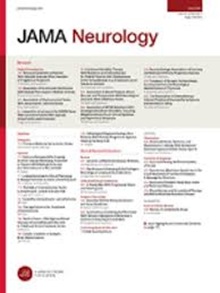母亲健康的社会决定因素和围产期缺氧缺血性脑病的风险。
IF 21.3
1区 医学
Q1 CLINICAL NEUROLOGY
引用次数: 0
摘要
围产期缺氧缺血性脑病(HIE)是导致死亡和长期发病的重要原因。产妇健康的社会决定因素(SDOH)和围产期HIE之间的关系尚未确定。目的探讨母亲种族、民族和其他SDOH与围产期HIE的关系。设计、环境和参与者本横断面研究对2012年1月1日至2019年7月31日期间出生的有保险的母婴二联体的出生队列进行了研究,检查了15家Kaiser Permanente北加州医院中妊娠35周或更晚出生的新生儿。数据分析时间为2024年5月12日至8月31日。母亲的种族和民族根据自我报告进行分类。SDOH的其他衡量指标包括邻里剥夺指数(NDI),邻里社会经济劣势的标志,以及公共保险。主要结局和指标主要结局是围产期HIE,定义为围产期酸中毒(脐带气pH <7或碱基缺陷≥10 mmol/L,或2小时前获得的首个婴儿血气样本碱基缺陷≥10 mmol/L)和新生儿脑病的存在,经医疗记录审查证实。结果290例 535例新生儿中,51.1%(148例 158例)为男性,平均胎龄39周;25.8% (n = 75 011)为西班牙裔,24.6% (n = 71 366)为非西班牙裔亚裔或太平洋岛民,6.4% (n = 18 602)为非西班牙裔黑人,4.2% (n = 12 214)为非西班牙裔多种族,37.6% (n = 109 147)为非西班牙裔白人。1.4%的新生儿(n = 4195)缺少母亲种族和民族数据。围产期HIE的患病率在非西班牙裔亚裔新生儿中较高(0.2%;风险比[RR], 1.38 [95% CI, 1.06-1.80]),非西班牙裔黑人(0.2%;RR, 1.66 [95% CI, 1.15-2.14]),非西班牙裔白人母亲(0.2%;RR, 1.54 [95% CI, 1.21-1.95])高于西班牙裔母亲的新生儿(0.1%)。黑人和西班牙裔母亲更有可能居住在社会经济劣势更大的社区,并有公共保险。在调整NDI、公共保险和临床特征后,与非西班牙裔白人母亲的新生儿相比,西班牙裔母亲的新生儿患HIE的几率低25%(优势比0.75 [95% CI, 0.60-0.95];p = .02)。与中等分位数相比,NDI最高的分位数表明邻居剥夺程度较高,与HIE发生率降低独立相关(优势比为0.78 [95% CI, 0.62-0.98];p = .03)。结论和相关性这些研究结果表明,西班牙裔母亲的新生儿围产期HIE患病率较低,而居住在社会经济最不利社区的母亲的新生儿患病率较低。在特定亚群中确定围产期HIE风险较低的根本原因可能为制定有针对性的HIE预防政策提供信息。本文章由计算机程序翻译,如有差异,请以英文原文为准。
Maternal Social Determinants of Health and Risk of Perinatal Hypoxic-Ischemic Encephalopathy.
Importance
Perinatal hypoxic-ischemic encephalopathy (HIE) is an important cause of mortality and long-term morbidity. The association between maternal social determinants of health (SDOH) and perinatal HIE has not been established.
Objective
To examine the association of maternal race, ethnicity, and other SDOH with perinatal HIE.
Design, Setting, and Participants
This cross-sectional study of a birth cohort of insured maternal-neonatal dyads with births between January 1, 2012, and July 31, 2019, examined neonates born at 35 weeks' gestation or later at 15 Kaiser Permanente Northern California hospitals. Data were analyzed from May 12 to August 31, 2024.
Exposures
Maternal race and ethnicity were classified by self-report. Other measures of SDOH included the neighborhood deprivation index (NDI), a marker of neighborhood-level socioeconomic disadvantage, and being publicly insured.
Main Outcomes and Measures
The primary outcome was perinatal HIE, defined as the presence of perinatal acidosis (cord gas pH <7 or base deficit ≥10 mmol/L, or base deficit ≥10 mmol/L on first infant blood gas sample obtained before 2 hours of age), and neonatal encephalopathy, confirmed by medical record review.
Results
Of 290 535 newborns, 51.1% (148 158) were male, and the mean gestational age was 39 weeks; 25.8% (n = 75 011) were Hispanic, 24.6% (n = 71 366) were non-Hispanic Asian or Pacific Islander, 6.4% (n = 18 602) were non-Hispanic Black, 4.2% (n = 12 214) were non-Hispanic multiracial, and 37.6% (n = 109 147) were non-Hispanic White. Maternal race and ethnicity data were missing for 1.4% of newborns (n = 4195). The prevalence of perinatal HIE was higher among newborns of non-Hispanic Asian (0.2%; risk ratio [RR], 1.38 [95% CI, 1.06-1.80]), non-Hispanic Black (0.2%; RR, 1.66 [95% CI, 1.15-2.14]), and non-Hispanic White mothers (0.2%; RR, 1.54 [95% CI, 1.21-1.95]) than newborns of Hispanic mothers (0.1%). Black and Hispanic mothers were more likely to reside in neighborhoods with greater socioeconomic disadvantage and to be publicly insured. After adjustment for NDI, public insurance, and clinical characteristics, neonates of Hispanic mothers had 25% lower odds of HIE compared with neonates of non-Hispanic White mothers (odds ratio, 0.75 [95% CI, 0.60-0.95]; P = .02). The highest tertile of NDI, indicating higher neighborhood deprivation, was independently associated with decreased odds of HIE compared with the middle tertile (odds ratio, 0.78 [95% CI, 0.62-0.98]; P = .03).
Conclusions and Relevance
These findings suggest that there was a lower prevalence of perinatal HIE among newborns of Hispanic mothers and among newborns of mothers who resided in the most socioeconomically disadvantaged neighborhoods. Determining the root causes for the lower risk of perinatal HIE among specific subgroups may inform the development of targeted HIE prevention policies.
求助全文
通过发布文献求助,成功后即可免费获取论文全文。
去求助
来源期刊

JAMA neurology
CLINICAL NEUROLOGY-
CiteScore
41.90
自引率
1.70%
发文量
250
期刊介绍:
JAMA Neurology is an international peer-reviewed journal for physicians caring for people with neurologic disorders and those interested in the structure and function of the normal and diseased nervous system. The Archives of Neurology & Psychiatry began publication in 1919 and, in 1959, became 2 separate journals: Archives of Neurology and Archives of General Psychiatry. In 2013, their names changed to JAMA Neurology and JAMA Psychiatry, respectively. JAMA Neurology is a member of the JAMA Network, a consortium of peer-reviewed, general medical and specialty publications.
 求助内容:
求助内容: 应助结果提醒方式:
应助结果提醒方式:


